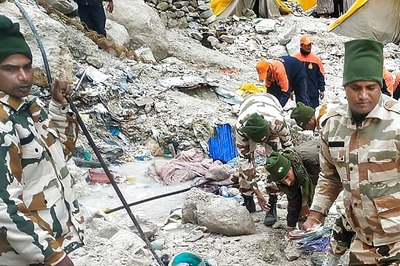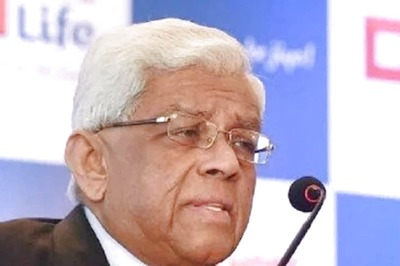
views
A journey of 3,84,000 km, traversed on a pre-defined path will see Chandrayaan-2 face its moment of truth after a month-and-half-of being launched from Sriharikota. The lander module, Vikram, has already detached itself from the main spacecraft and will soon begin the final descent to the moon's surface from the nearest point in its current orbit, which is 35kms in vertical distance, sometime after 1.30am on Saturday.
If successful, this would be India’s first soft landing on the moon’s surface. Only the US, the former USSR and China have been successful in making landings on the moon.
Notably, of a total of 109 missions to the moon so far, 41 have been unsuccessful. According to ISRO, the various technological challenges they will face include:
Trajectory Accuracy: Ensuring trajectory accuracy while navigating such a massive distance poses several challenges as trajectory is influenced by various factors such as gravitational pull from astronomical bodies, solar radiation pressure, and non-uniform gravity of the earth and moon.
Deep Space Communication: Owing to the large distance between Earth and the Moon, radio-signals used for communication are weak with heavy background noise which needs to be picked up by large antennas.
Lunar Capture: As the moon approaches the apogee of Chandrayaan 2, on-board thrusters fire precisely to reduce its velocity for lunar capture. The margin of error in these calculations is very narrow.
Soft Landing on the Moon: The most challenging part of the mission, the landing site landscape features should not result in a communication shadow area and the onboard NGC and propulsion system has to work is unison, automatically and autonomously for a successful landing.
Notably, to apply brakes on its speed, Vikram will fire thrusters in the direction of its movement. The thrusters use two chemicals, mono methyl hydrazine and nitrogen tetroxide — as fuel. The four thrusters on Vikram would be firing simultaneously throughout the time of the descent. However, if there is a deviation from the pre-defined profile and the thrusters do not fire as programmed, due to problems such as blockage, Vikram has the provision of a fifth thruster as well.
Vikram’s four legs have also been enabled with a much greater ability to absorb shocks. Vikram programmed to make a landing after decelerating to a speed lower than 2 metres per second.
When Vikram is about 100 metres above the surface, it will commence a hazard avoidance manouevre. This is because it is only then that it would be able to assess whether the chosen location is flat enough, and free of any stones or boulder, to land safely. If everything goes according to the programme, Vikram’s downward movement would almost come to a halt, with the firing of the thrusters providing enough upward lift to balance the gravitational pull and helping it land.
However, if the onboard cameras detect any problem, Vikram can move around a few metres horizontally to locate and land at a safer place.
While it is designed to withstand a slope of 15 degree inclination, but it would try and avoid any of its legs landing on a stone or a boulder.
After three hours of landing, Pragyan would come out of the lander and slope down to the moon's surface to collect data. Both the lander and rover are designed to be operational for 14 days, during the duration of a lunar day.


















Comments
0 comment